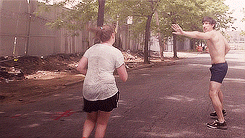Most of us are happy snapping digital photos several times a week. Whether we look back at this prolific evidence of our everyday lives is another thing. I sometimes glance at the thumbnails on my phone’s photo roll, for the digital traces of what caught my attention. I tend to overlook videos I’ve shot and – not surprisingly – I hardly use that functionality. Flipping through a set of pictures is easy, but glancing at videos takes patience. Is waiting a few seconds for a video to reveal itself worth it for my brain? Often not, as it breaks the flow of glancing over thumbnails. Luckily there is something in between, the moving still.
The moving still image, sometimes called 2.5D imagery, precedes video and photography. From the 17th century on, predecessors to our modern projectors – magic lanterns – were used to project imagery onto a wall, supporting stories told in theatres and other venues. Soon people realised that introducing movement to the images had a great effect on the audience, and so-called phantasmagorias made ample use of scary imagery of skeletons, devils and other frightening creatures that appeared to draw near. A precursor to the modern day horror movies, phantasmagorias based on handpainted images became popular and paved the way towards cinema in later times. When photography and quickly alternating stills (video) became technically viable, the moving still image lost some of its appeal.

In our age, there are a few ways to get an easily digestible but not entirely still image. Far from gone, the internet’s most beloved technology – GIF images – powers social media with everything from cats doing silly things, to people hurting themselves and (generally) capturing the most salient part of a longer video. It works very well to convey emotional expression and is fairly able to summarise an event. See Giphy.com for a search engine specifically aimed at finding that one gif that will thaw your heart today. Making them yourself is not as easy as just capturing a still photo or a video, because it needs editing. Distilling the essence of a moment into just a few frames requires rigorously taking everything else out. We all know it hasn’t stopped the internet from doing it, but it is not standard fare for most people.

A much more stylized variation on this theme is the Cinemagraph, which is essentially a still photo with only some elements moving. Jamie Beck and Kevin Burg, who worked out this concept for their photography practice, call it an “image that contains within itself a living moment that allows a glimpse of time to be experienced and preserved endlessly.” The subtle use of animation gives each image a little extra without the commonly jerkier appearance of GIF images from videos.

A cinemagraph may be stylised after the fact by careful editing, but that need not stop us on our quest for a little swing in a photo. Enter the fauxtograph. The idea is simple: pretend to take a still photo of someone (who will pose) but take a short video instead. While some of these tricked subjects of attention will devolve into a weirdly forced smile, the longer recording may very well capture a little personality and the dynamics of any shot. It’s easy to do and worth a try (and remember, it’s better when people do not realise it).
Audiophotography (as described in Audiophotography: Bringing photos to life with sounds by David Frohlich, 2004) takes another approach. Instead of compacting a short video into a looping animation, audiophotographs take one photo and add a short sound clip. The sound recording is what captures the temporal quality, such as waves rolling in to complement a beach picture. Such auditory augmentation helps to bring back the moment. Unfortunately, there is no standard format to share this kind of media other than a video file.
There are more complicated tricks one could use to spice up a still photo for later viewing, such animating it after the fact or using it in a moving slideshow. I haven’t touched the short video social media such as Vine and Instagram, which aim for clips just a few seconds in length. It is a fine line to walk for 2.5D imagery, balancing between still shots and movies. Those fully animated ideas slip towards revealing over time similar to video; while I tried to look at the boundaries of the still photograph, which bares all in one mere glance.